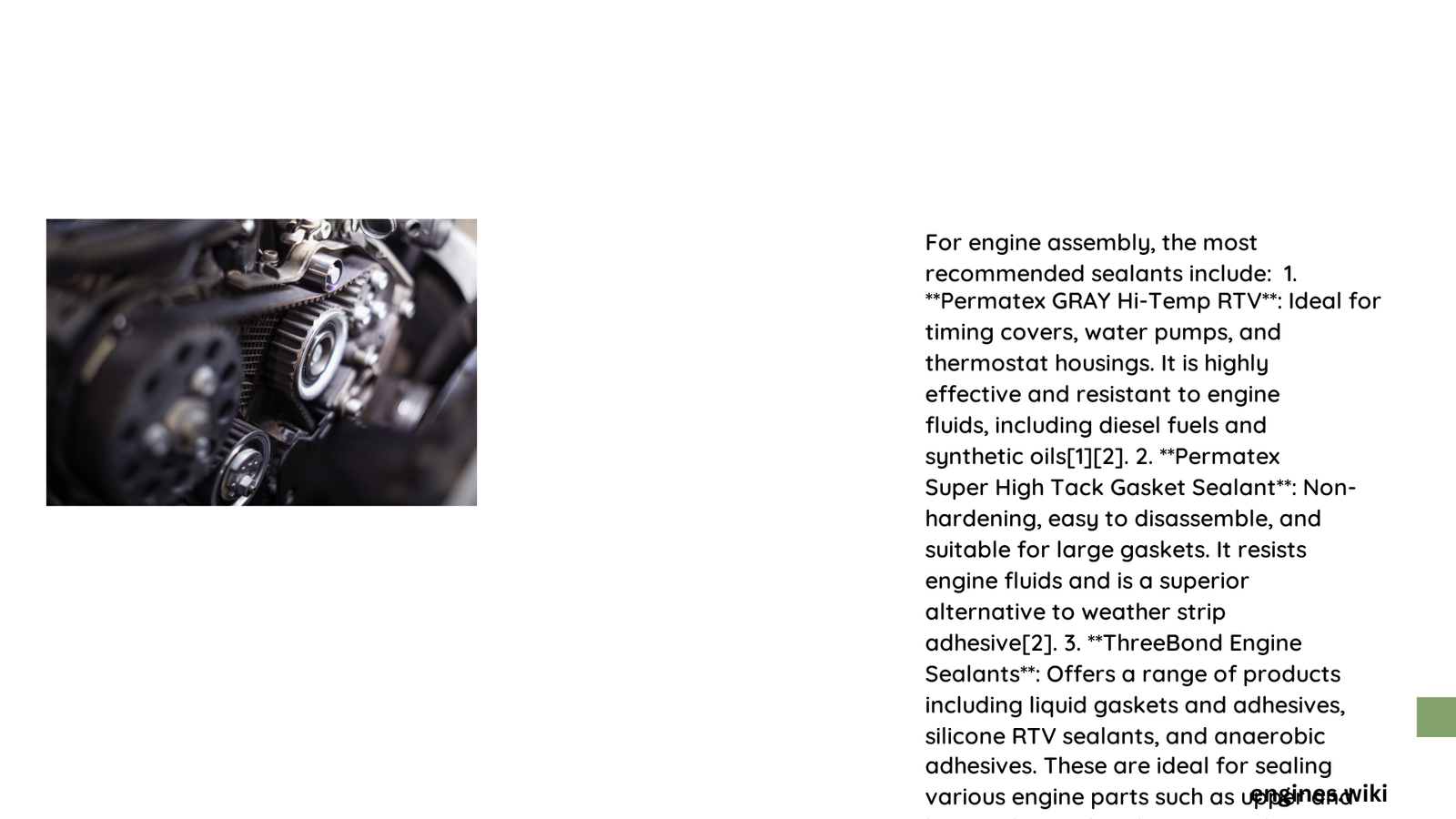Engine assembly sealants are critical components in automotive and industrial machinery, providing essential protection against leaks, vibrations, and extreme temperatures. These specialized compounds create robust seals between mechanical components, ensuring optimal performance and preventing potential system failures across various mechanical environments.
What Are the Primary Types of Engine Assembly Sealants?
Silicone High-Temperature Sealants
Silicone high-temperature sealants represent a versatile solution for engine assemblies, offering remarkable thermal resistance and durability. Key characteristics include:
- Temperature range: -55°C to 300°C
- Exceptional chemical resistance
- Flexibility under mechanical stress
- Resistance to aging and environmental degradation
Performance Comparison of Engine Assembly Sealants
| Sealant Type | Temperature Tolerance | Flexibility | Chemical Resistance | Typical Applications |
|---|---|---|---|---|
| Silicone RTV | -50°C to 250°C | High | Excellent | Gaskets, Engine Blocks |
| Anaerobic | -55°C to 180°C | Moderate | Good | Threaded Connections |
| Extreme Temperature | Up to 815°C | Low | Superior | High-Pressure Systems |
How to Prepare Surfaces for Sealant Application?

Surface Preparation Techniques
Proper surface preparation is crucial for effective sealant performance:
- Cleaning
- Remove all contaminants
- Use industrial-grade solvents
-
Ensure completely dry surface
-
Surface Roughening
- Create microscopic texture
- Enhance adhesion properties
- Use specialized abrasive materials
What Factors Influence Sealant Selection?
Critical Selection Criteria
When choosing an engine assembly sealant, consider:
- Temperature Range: Operational environment
- Chemical Compatibility: Potential exposure
- Mechanical Stress: Vibration and pressure levels
- Curing Time: Project timeline requirements
What Are Best Practices for Sealant Application?
Application Methodology
Successful sealant application involves:
- Precise thickness control (0.1 – 5 mm)
- Uniform bead distribution
- Appropriate environmental conditions
- Recommended curing times
Cost and Performance Considerations
Economic Evaluation of Sealants
Sealant selection involves balancing performance and cost:
- High-performance sealants: Higher initial investment
- Long-term reliability: Reduced maintenance expenses
- Application-specific pricing variations
Technical Recommendations
Expert Insights
- Always verify manufacturer specifications
- Consider environmental testing
- Implement proper storage protocols
- Rotate inventory to maintain sealant quality
Maintenance and Monitoring
Ongoing Performance Assessment
- Regular visual inspections
- Periodic performance evaluations
- Document application parameters
- Track long-term reliability metrics
Emerging Technologies
Future of Engine Assembly Sealants
Ongoing research focuses on:
– Nanotechnology-enhanced formulations
– Improved thermal stability
– Environmentally sustainable compounds
– Advanced synthetic polymers
Conclusion
Engine assembly sealants represent a critical technological solution in mechanical engineering, offering precision, reliability, and performance across diverse applications.
